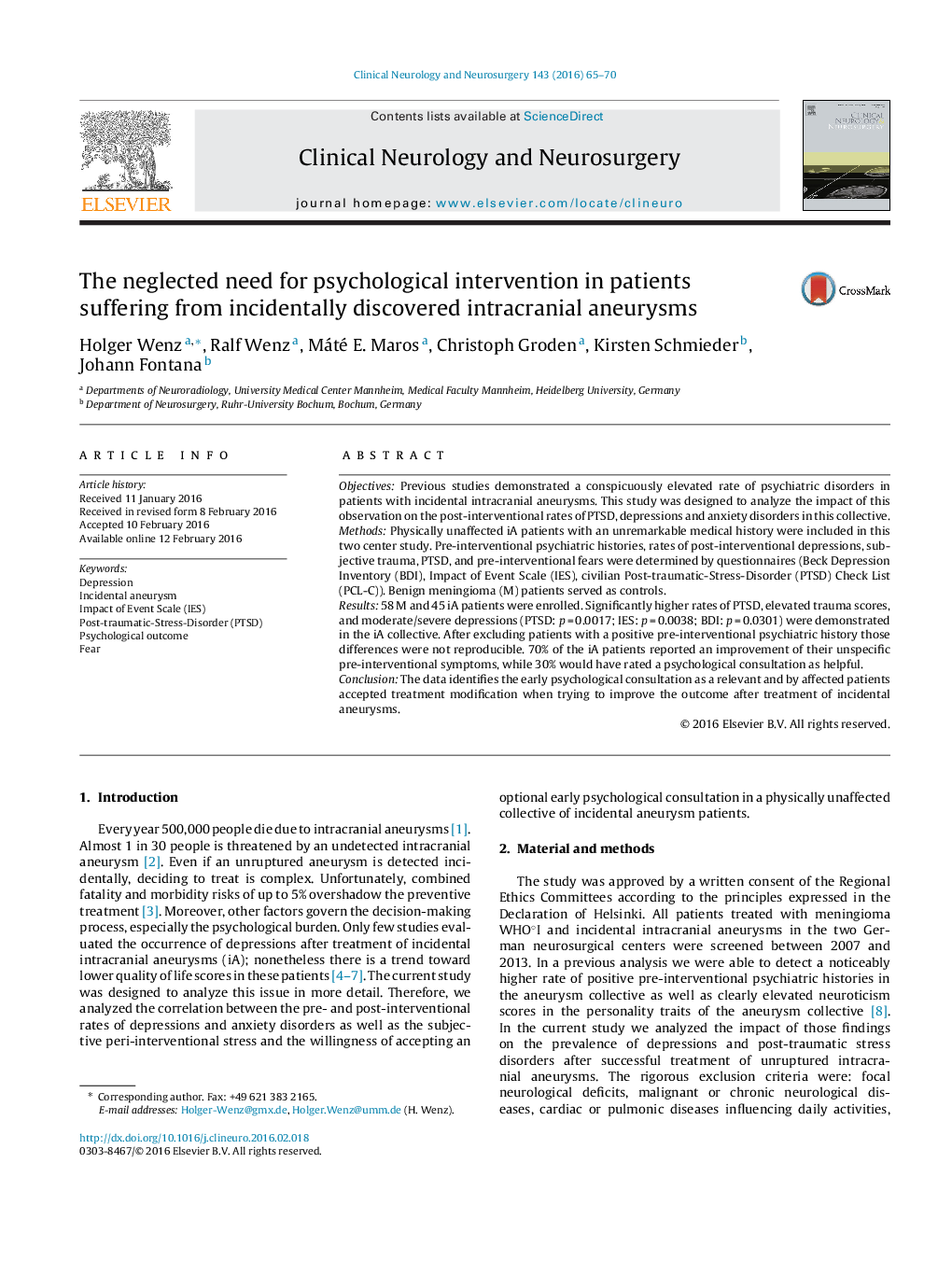| Article ID | Journal | Published Year | Pages | File Type |
|---|---|---|---|---|
| 3039638 | Clinical Neurology and Neurosurgery | 2016 | 6 Pages |
•Higher prevalence of PTSD in incidental aneurysm (iA) patients compared to meningioma patients.•Higher prevalence of depression/psychological trauma in iA compared to meningioma patients.•Information about the vulnerable status of the iA patients in the chart reviews are sparse.•Pre-interventional fears are significantly lower in the meningioma in contrast to the iA patients.•High acceptance for an optional early psychological consultation in meningioma and iA patients
ObjectivesPrevious studies demonstrated a conspicuously elevated rate of psychiatric disorders in patients with incidental intracranial aneurysms. This study was designed to analyze the impact of this observation on the post-interventional rates of PTSD, depressions and anxiety disorders in this collective.MethodsPhysically unaffected iA patients with an unremarkable medical history were included in this two center study. Pre-interventional psychiatric histories, rates of post-interventional depressions, subjective trauma, PTSD, and pre-interventional fears were determined by questionnaires (Beck Depression Inventory (BDI), Impact of Event Scale (IES), civilian Post-traumatic-Stress-Disorder (PTSD) Check List (PCL-C)). Benign meningioma (M) patients served as controls.Results58 M and 45 iA patients were enrolled. Significantly higher rates of PTSD, elevated trauma scores, and moderate/severe depressions (PTSD: p = 0.0017; IES: p = 0.0038; BDI: p = 0.0301) were demonstrated in the iA collective. After excluding patients with a positive pre-interventional psychiatric history those differences were not reproducible. 70% of the iA patients reported an improvement of their unspecific pre-interventional symptoms, while 30% would have rated a psychological consultation as helpful.ConclusionThe data identifies the early psychological consultation as a relevant and by affected patients accepted treatment modification when trying to improve the outcome after treatment of incidental aneurysms.
